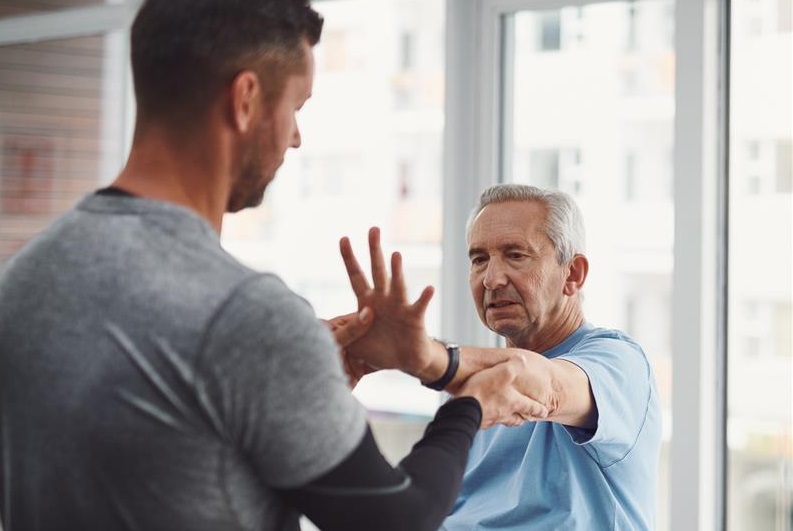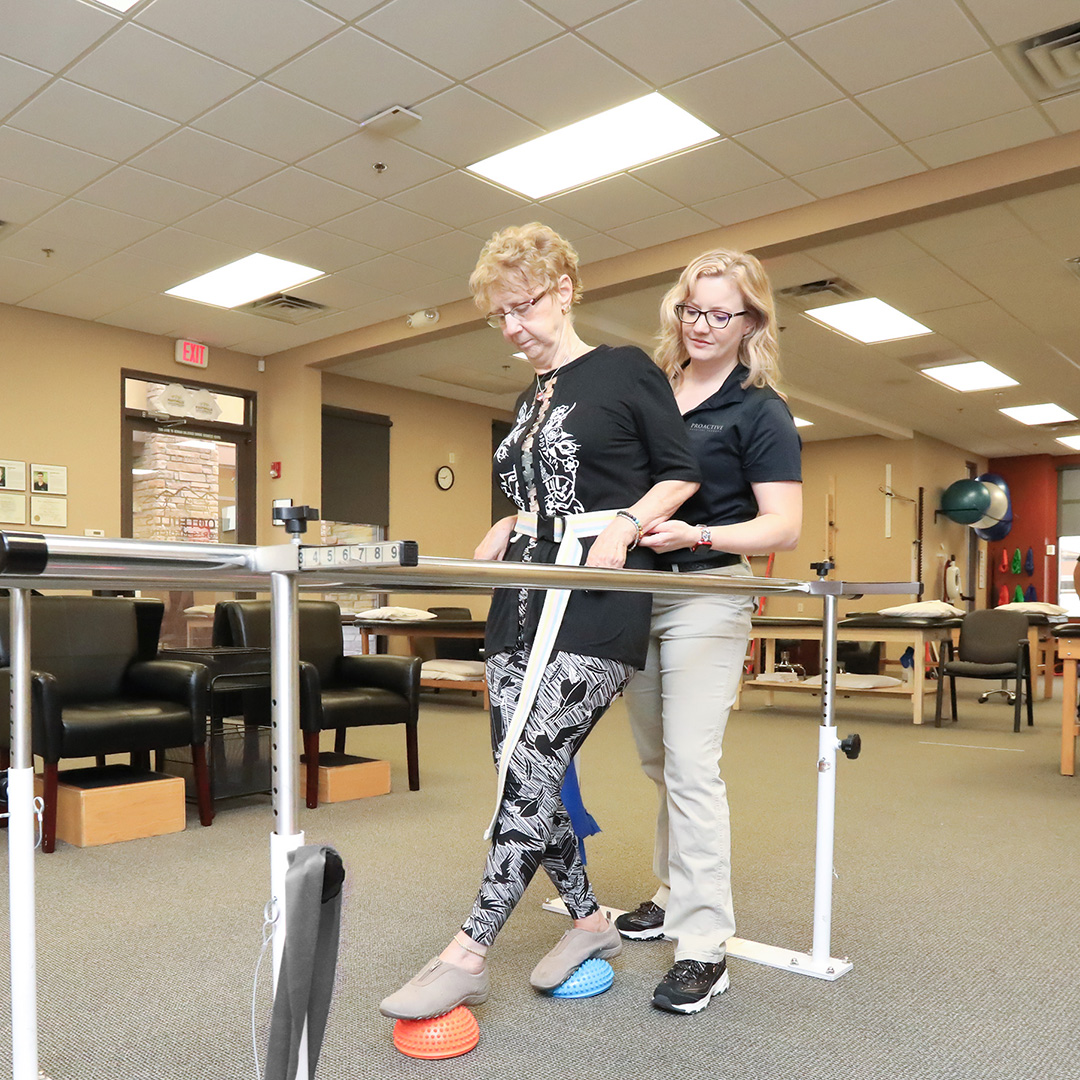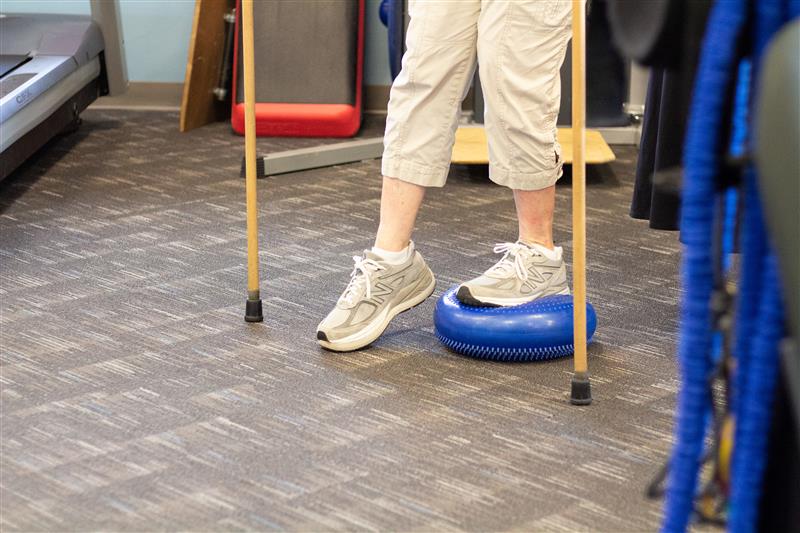Parkinson’s disease causes characteristic neurological symptoms by affecting a particular area of the brain. Most people are aware that Parkinson’s causes involuntary muscle shaking called tremors. It also causes problems with balance and slows movement. Joints and limbs can become rigid and stiff. Because Parkinson’s is a progressive neurodegenerative disease, it cannot be cured. Nevertheless, there are ways that you can manage the symptoms and maintain your quality of life. As part of a larger treatment plan, physical therapy for Parkinson’s disease offers significant benefits.
How Can Physical Therapy Help Improve Outcomes for Patients With Parkinson’s Disease?
Physical therapy can help patients with Parkinson’s achieve better outcomes in several ways. Parkinson’s primarily causes impairments in movement, and part of the goal of physical therapy is to enhance and preserve this ability. The Parkinson’s Foundation conducted a clinical study that found that patients experienced a slower decline in quality of life with increased physical activity amounting to 2.5 hours per week or more.
Another way that physical therapy can help you is by providing compensatory treatments. New equipment, movement techniques, and strategies can help you compensate for the changes that Parkinson’s brings about. A physical therapist can teach you new ways to perform your usual activities.
Physical therapy can be helpful regardless of your disease’s progression. However, you may see the greatest benefit during the earliest stages, when movement impairments from Parkinson’s are less obvious. Unfortunately, because the impairments are less bothersome in the early stages, some people do not seek physical therapy for help managing their symptoms and fail to receive the full benefits.
Five Benefits of PT for Parkinson’s Disease
While exercise can benefit you in all stages of Parkinson’s, physical therapy can help you improve specific issues that can arise as the disease progresses.
1. Increased Strength
It is natural for muscles to weaken with age, but this could complicate underlying Parkinson’s symptoms. Resistance exercises can help you increase strength and counteract some of the effects of Parkinson’s. A physical therapist can tailor a strength training program for you based on what stage your disease is in. For example, you can benefit from the resistance of the water during pool-based therapy. Other options include working with a resistance band or light dumbbells.
2. Amplified Movement
Parkinson’s can cause your physical movements to become smaller and more shuffling, a symptom called hypokinesia. To counteract this effect, your therapist may guide you through a form of physical therapy specific to Parkinson’s patients called LSVT BIG. The goal is to slow down hypokinesia’s progression by retraining the muscles through exaggerated physical movements. During LSVT BIG, you may swing your arms wide or take extremely high steps with the help of a therapist to support and guide you.
3. Increased Flexibility
Dystonia, or abnormal stiffness of muscles and joints, is a common symptom of Parkinson’s disease. The calf, hip flexor, and hamstring muscles can be particularly affected. Stretching frequently can help to counteract that stiffness and improve flexibility. A physical therapist can teach you specific stretches you can do and instruct you on how often to perform them.
4. Reinforced Reciprocal Patterns
Parkinson’s can affect reciprocal patterns of left-to-right or side-to-side movements. Swinging your arms while you walk is a good example. A physical therapist can teach exercises that practice these patterns so you don’t lose them. For example, a PT may have you work on an elliptical machine, which requires you to keep your arms and legs moving simultaneously.
5. Improved Balance
Parkinson’s can make your walk unstable by affecting the system that is responsible for your balance. This is an interplay between the sensation of the ground beneath your feet, visual feedback from your eyes, and orientation by your inner ear. A physical therapist can work with you to understand whatever balance issues you are experiencing and teach you to compensate. Gait training is one example of an exercise to improve balance. It is a technique of practicing walking.
Easy Exercises You Can Try At Home
Once you learn physical therapy exercises, you can usually perform them at home. A therapist can inform you how often you should perform your exercises. If you want to get started with therapy on your own, here are a couple of exercises you can try at home.
Wrist Curls – You need a dumbbell that weighs one to five pounds to perform this exercise. Holding the weight in one hand, place the wrist over a table’s edge with the palm facing up. Perform 12 repetitions in which you slowly flex your wrist to move your hand up as far as possible. When you can’t go any further, hold for a few seconds. Repeat this on the other side, and if you can, do two sets on each hand. This exercise helps to improve the dexterity of your fingers and hands and reduce tremors.
Single-Leg Stand – This exercise improves steadiness and balance when standing or walking. You can rest your hands on the back of a chair or against the wall for support. Start by standing on your less dominant leg, placing all your weight on it. Lift the opposite foot off the floor slowly. Using your arms for balance as little as possible, hold the position for 20 seconds before repeating on the other side.
Physical Therapy Options for Improving Outcomes for Parkinson’s Disease
Safety is an issue with those seeking exercise as a treatment for Parkinson’s disease. Patients may be deterred from seeking treatment if they have an advanced case with severe balance issues or chronic injuries, such as the back or knees. As skilled medical professionals and movement disorder specialists, that is where the physical therapists at ProActive Physical Therapy come in. We see various chronic musculoskeletal injuries and conditions. Coupled with our medical knowledge and experience with Parkinson’s disease, we properly formulate and create a program tailored specifically for the individual client with their needs in mind. Patients undergoing our Parkinson’s therapy sessions will see decreased symptoms, including rigidity, bradykinesia, coordination, and tremors. A physical therapist can suggest exercises tailored to your condition; personalized programs may contribute to a better long-term outcome.
Please contact us at ProActive Green Valley for more insightful information on physical therapy for Parkinson’s — Exercise is medicine! We accept insurance and self-pay options.
Our Physical therapists involved with Parkinson’s therapy sessions are all PWR! Certified.
ProActive is Tucson’s leading physical therapy provider, serving patients with various injuries and musculoskeletal pain. Our commitment to hands-on, individualized therapy allows us to help you achieve your specific goals. Schedule a free consultation with one of our therapists today!




